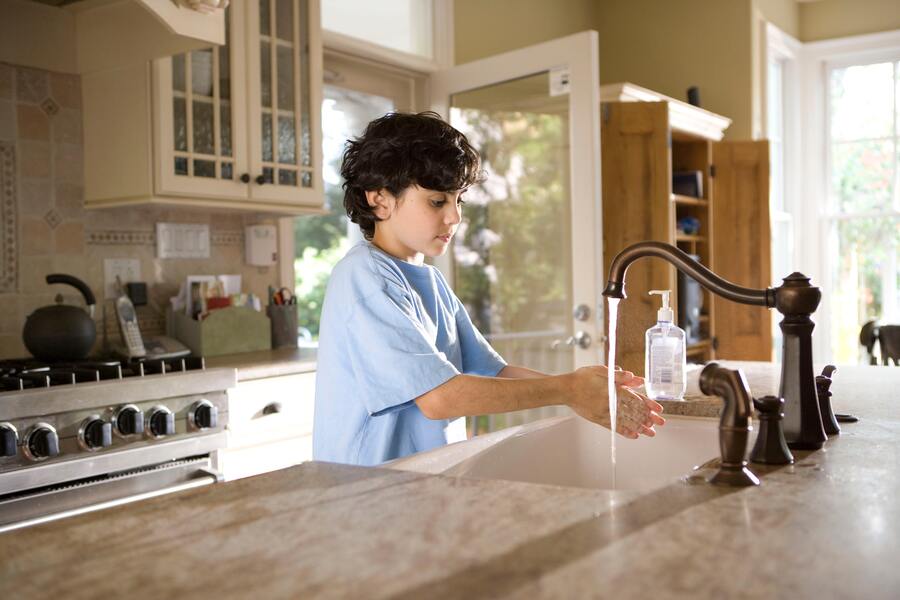Part of being a kid nowadays involves being around technology and smartphones. In the same way, being a parent involves making sure kids are being safe while browsing online. We asked the experts for their tips on how to keep kids safe online and we’re sure you’ll be surprised by some of their advice.
What are the biggest threats from IoT toys and how to avoid them?
“IoT toys, like other IoT devices, frequently have limited security protections (especially less-expensive ones). The software embedded in IoT toys may contain bugs that allow criminals to take over the toy or use it to access the network linked to the toy. The best way to avoid the risks of an IoT toy (or other device) is to make sure you can change the default password on the device when connecting to your home network. If you can’t, don’t buy the toy, and use a strong password that’s unique to the toy. When possible, only buy toys that offer the ability to update the software so any security flaws can be patched, just like your smartphone or computer.”
James E. Lee, Identity Theft Resource Center
How can we empower students to navigate and address cyberbullying effectively?
“Educating students about being cyber smart and cyber safe can empower them to identify, protect themselves from, and deal with cyberbullying. While we may never be able to stop cyberbullying entirely, we can use Being Cyber Safe and Cyber Smart – Student Workbook and Teacher’s Guide to teach children to learn how to recognize harmful behavior, foster self-esteem, and provide tools and resources for removing themselves from a harmful situation and reporting cyberbullying to people who can help.”
Dolly Bhargava, Behaviour Help
What are some important steps to consider for ensuring the safety and privacy of smart device?
Find out as much as you can before you purchase. Investigate the model’s reputation for safety and privacy to see whether it has been the subject of any bad reports or studies. Safeguard your router. All of the other gadgets in your house that connect to the internet do so via this device. To reduce potential dangers, turn off the gadget while it is not in use. Learn how to use the item, and keep an eye on any younger kids who may be around. Make sure the toy is updated to the most recent firmware version if it supports updates. Be sure your gadgets employ authentication when connecting through Bluetooth and provide encrypted data to your home wifi. Find out the location of any data you have and to what extent the firm is reputable for its security measures. When making online accounts, make use of passwords that are both secure and different from others. Sharing less information means you’ll be less vulnerable if a hacker gains access to the system or an employee loses it. Toys with intelligence have the potential to be both fun and instructive. Ensuring the security of your family’s information and minors before kicking back and having a good time is the best way to avoid any unpleasant surprises.
TechGeeze | Breaking Tech News
How can I help my child understand why is it important for them not to share personal information?
“Children often don’t know that the information they share is too personal. Although they may not think there is harm in sharing information like the school they attend or their phone number with strangers they meet online, this could leave them vulnerable to cybercrimes and even real-life threats. Not only does the Internet run rampant with cybercriminals and cyberstalkers, who deceive children and use their information to steal their identities, but they can also track their whereabouts and become a physical concern if not careful. Children and teenagers must know the risks of sharing too much information on public social media platforms and the dangers of interacting with strangers online. Experts recommend avoiding last name use on public forums when possible, as well as school name hints at future locations, current locations, phone numbers, and email and physical addresses.”
Sabina Green | Mummy Matters
How do I increase my child security?
“Your home is meant to be a safe haven for you and your family, especially if you have kids. This is why you should take precautionary measures to ensure security. Here are some of the things you should do as a parent to make your home safe like never before:
-The Use of Ambient Intelligence: One of the ways ambient intelligence can be measured is through ambient sensing. Ambient sensing is a kind of technology that makes use of sensors to gather information from the surrounding environment.
Install Wireless Security Cameras: Security cameras can help you monitor the home for any suspicious movement or activity. However, professional burglars can tamper with the wires and cut them off so that the camera does not capture their movements or even their faces. You can decide to go for wireless cameras as they are more secure.
Use Motion Sensor Lights: Motion sensors are used to detect movement within an area. When you install motion sensor lights in the most unusual of places within and outside the home, they can be of great benefit.”
What are the top online threats for kids?
“We think a lot about protecting the personally identifiable data for kids, but I think the most common threat for them is around cyberbullying. While it might not be the most physically dangerous threat, it’s probably the most prevalent.” – Brian Kellner
“Kids recognize strangers quickly in physical interactions, but online interactions can be much trickier for students to navigate. Starting what seem to be innocent conversations with others in video games or chat rooms can lead to a whole host of other issues like exposure to inappropriate content, the revealing of personal identifiable information (PII), or attempts to meet in person. Cyberbullying is at the top of my list as well. Because it is behind a screen, it can happen anytime and anywhere, completely out of sight of any supervising adult that could stop the bullying or mitigate its effects.” -Tod Johnston
What are the benefits of parental control software?
“Parental controls help monitor your kids’ devices while they are still learning to use the devices safely and make friends online. Some of the key benefits include:
1. Reducing risks of cyberbullying and predatory attacks by monitoring problematic conversations and online activities.
2. Setting up child profiles to access only age-appropriate websites and blocking certain features of gaming apps to prevent in-app purchases.
3. Tracking live location to make sure your kids are safe and helps you find them during emergencies 4. Breaking screen addiction by building healthy screen habits with daily screen time limits
5. Peace of mind you experience when you know your child is accessing safe content online.”
What are some of the best safe video games for kids?
As a Dad with a toddler and lots of video games, here are some of my favorite video games to play with my kids, which also are safe.
-Super Mario 3D World :Is the best child-friendly game ever made. The levels are open and friendly. The game can be played with simple controls but hides a fair amount of depth for experts.
-Minecraft :It’s the Lego for the new generation. Minecraft is so good for kids that it gets used in schools to help with creativity and problem-solving.
-Stephen, SportsGaming.win
What are the digital citizenship skills children need to learn?
“What comes to mind right away for me with the term digital citizenship is how kids interact with each other on social media. Conversations need to be had with children and teens about how there can be a real emotional impact as a result of those interactions. The things they do and say online do not just affect the people around them but could have major ramifications for their own futures. Defining the effects of cyberbullying is important, not only so that they can be mindful of what they say but so they can recognize it if they see it happening to themselves or their peers.”
How to talk to a child about interacting with strangers online
“Move away from saying online friends are strangers: It is important to tell our children not to accept friend requests from individuals they do not know offline. However, we also must be mindful that children are developing meaningful and important relationships with people they only know online. Even if they do not know them in person, online friends are real and meaningful to them. We, adults, have a hard time understanding this concept because most of us were introduced to online social interaction as young adults, but children are growing up in a world where both online and offline are equally important to their social development. Instead have open conversations about online safety and help them develop critical think and problem solving skills.
Start early: as soon as your child starts going online, have conversations and specific examples about what is ok to share. For Example: Online gaming conversations should only be about the game.
What would you do? Ask your child what you would do?
-If someone makes you feel uncomfortable/sad/mad, etc.?
-If someone asks you to do something, you are not comfortable doing or are not supposed to do?
Ask questions about their online friends.
-How did they meet?
-How many friends in common do they have/ how do their friends in common know that person? -What do they talk about?
-Have they video chatted with that friend?
Red Flags: communicate to your child that sometimes inappropriate requests develop into more dangerous relationships. You may talk to older teens and adults you don’t know online when you’re doing something like playing a game, but they should never: Talk about dating you, ask for revealing pictures of you or ask to meet you offline.
Trusted adults: Help your child identify three trusted/safe adults they can ask for help if they do not feel comfortable talking to you.
Inappropriate request: If anyone is sending you inappropriate requests, you should: Think before you send, block or unfriend them, teport any inappropriate behavior to the website or app you’re using and tell an adult you trust.
Ask for Help: If something happens, tell them that they can talk to you.”
The National Center for Missing & Exploited Children
Why are parental controls important?
“If your kids have their own mobile devices, you may want a way to track and control what they’re doing. The best parental control apps offer ways to limit time spent on the device, track usage and location, and block apps or games as necessary.”
What is the best age for kids to learn coding?
“Kids can start learning the basics of coding as early as first grade, around age 5. With students this young, the best strategy is to start with directional coding activities that use arrows or symbols to illustrate the very basics of coding. There are plenty of screen-free coding games and toys you can use to start. There are also drag-and-drop coding platforms, like Scratch, that don’t require advanced typing skills. In third grade, around age 8, children can start learning more complex concepts like computational thinking with simple algorithms and loops. We recommend kids start learning text-based languages, like JavaScript and Python, when they are able to type 25-30 wpm with 90% accuracy, usually around age 10. Elementary school-aged kids are more open to new concepts. Beginning the discussion around coding at an early age makes it more natural for them to learn more advanced concepts as they get older.”
How can we teach children to use technology properly?
“Parents should put an emphasis on teaching their children how to use technology responsibly. This includes teaching them the basics of online safety, such as not sharing personal information, not clicking on suspicious links, and being aware of cyberbullying and other online threats. Additionally, parents should set clear rules and expectations around how their children use technology and make sure they are following them. This will help ensure that their children are using technology responsibly and not over-relying on it.”
Denis Ristić, AskGamblers
Tips to manage children’s screen time
“Increased screen time is often associated with a range of emotional and interpersonal challenges. In general, kids and teens who spend an excessive amount of time in front of a screen might have a harder time managing their emotions, and they might be less curious or unable to tolerate boredom. It’s also common for frequent screen time use to impact their ability to focus and follow through with tasks. Too much screen time for kids and teens can also lead to less in-person interactions, which can increase feelings of isolation and loneliness. Anyone who engages in significant screen time may be more likely to have a diagnosis of anxiety or depression.”
Jody Baumstein, Children’s Healthcare of Atlanta Strong4Life
How do you set screen time limits with a child?
“In parental time control applications there are 3 key time periods of restriction: – School time – evening time – night time. You can install all these three periods separately on the phone. In school time and evening time you can allow using only educational applications and to perform calls. In nighttime all activity is forbidden. Besides this exist a daily time limit in workdays and in weekend separately. It is possible to use only educational apps above daily limit.“
What features do parents need to look for in a parental control monitoring app?
“Parental control tools are an extension of your own parenting style and family rules. So think about the way you want your kids to use technology, talk about it together with them, and then look for tools that reflect the sort of rules you want to put in place. For a lot of families there are three main types of rules:
1) rules about time that can be spent on screens – to regulate this, look for apps that let you set limits, schedule specific times when the phone will be available, or which allow you to remotely turn your kids phone off when they need to focus on something else.
2) rules about what children can access on their phones – to regulate this, look for apps with effective content filters, safe search locks and options to block apps individually and by category
3) rules about the way children behave online – this is where you need an app with good monitoring and reporting features that let you see what your child is up to. These reports will help you talk with your kids about the sites, apps, and people they interact with and the way that they do that.”
How can educational apps help children being prepared for school?
“In the modern world largely dominated by smartphones, learning has become fun because of numerous educational apps offered to students. Technology allows us to make the study process more interactive and enjoyable. Today, apps help learners assimilate more knowledge and better retain information. Smartphones have become indispensable tools at school. They help students to keep up with studies and be more efficient. Quick access to learning apps or a web browser helps to deal with school challenges much easier. For instance, students can google needed formulas and dates. Also, they can get absolutely confidential writing assistance on any subject. As you see, modern technology is highly beneficial for learners.”
How to manage content across kids’ streaming platform
“This is a very broad question, as there are numerous streaming platforms available today. But, broadly, many of these services offer built-in parental control features, including the option to set up a “kids profile” which will only show them content appropriate for their age. These controls work well for younger kids, but as curious kids get older they often learn how to easily bypass these settings. A better strategy is to try to co-watch content with your children and discuss what they watch. That way you can talk about what is appropriate for them and address anything they’ve seen that may not be appropriate for their age and stage. For more information, our “The Parent’s Guide to What Kids Watch” podcast offers tips for parents to learn about the shows kids are watching.”
How to protect family devices from low tech hacking techniques
“Keep all of your personal devices locked with either a passcode or biometrics and never leave smartphones laying around unattended. For laptops and other portable screens, it’s smart to invest in a privacy screen that blocks viewers from shoulder-surfing your session. You should take the time to set up multi-factor authentication on all of your important accounts, with your most important ones being your email accounts. If someone has access to your email, they usually use it to reset passwords on all of your other accounts. Be wary online of quizzes & social media posts that ask you to divulge information that can double as the answer to a security question – such posts include things like, “name the street you grew up on”, “post below the name of your first pet”.”
How to educate children about phishing
“Teaching children to think critically is a foundational skill that will help them question scams like phishing and other forms of fraud. Why is this being offered to me? What’s the rush? How can I safely verify if this is real? What could go wrong? Critical thinking is necessary for secure behavior both digitally and physically.”
What can parents do to reduce the negative effects of technology on their children?
“There are a few things parents can do to reduce the negative effects of technology on their children. One is to set rules and limits on how much time kids spend using tech devices. Another is to make sure kids are getting enough exercise and outdoor time. And finally, parents should talk to their children about the risks and dangers of excessive screen time, such as eye strain, social isolation, obesity, and addiction.”
What are the biggest obstacles kids face while learning to code?
“In my 30 years experience in coding education, I see two big obstacles kids face while learning to code. First, where to start. There are so many products that aim to teach kids how to code through edutainment, apps, or game-sponsored systems. These choices muddy the waters about what coding actually is and fail to present kids with a real engineering environment. Second, community. In most other extra-curricular activities you have community that helps your progression. In sports you have coaches to learn from and star players to emulate. In theater you spend years working your way up cast lists. But often, young coders are doing this themselves off Youtube videos or Internet searches, alone, with no one to bounce ideas with. Coding needs mentors, community, and purpose.”
Steven Fink, SummerTech
How to recognize safety and privacy risks when exploring new apps?
“Although there is specific legislation to protect the privacy of kids under 13 (COPPA – Children’s Online Privacy Protection Act), the risks exist and are not always easy to recognize. But parents and educators can take some precautions before and after downloading an app.
Before the download, adults can check age ratings in the app stores to find if the app is suitable for their kids. Then, reading some users’ reviews on the app and searching for some information about the developer may reveal if it is trustable. If the app passes these two tests and they download it, it’s time to check the privacy policy and settings. What information is collected on kids? For what purposes? Will it be sold to remarketing? Talking about ads, the best would be to have an ad-free app, but not all of us can pay for that. So, in the case of ad-based apps, ask this: are the ads COPPA compliant? Another important question is if the kids can interact with others through the app. Social media apps are very popular but should not be used by young kids.
Even if after all this the app seems harmful, it is not validated yet. Adults must explore the content of the app and all its features together with their kids before leaving the little ones to explore by themselves. Apps with user-generated content and no curation are particularly dangerous. This was one of the reasons why we created KidsBeeTV: to provide safe and fun content to kids and give parents peace of mind by knowing that all our content is curated by teachers and can be filtered by age.”
Marlene Ribeiro, KidsBeeTV
How to help children make the best use of their time online
“The crux of the issue surrounds content. The sheer volume of content churned out on daily drivers is mind-boggling. (Daily drivers refers to websites, apps and games that we use multiple times a day.) Did you know the number of tweets per day was 500 million in 2022? That’s a lot of content, the majority of which has been uniquely created through thoughts and opinions. TikTok had 1 billion monthly active users in January. They wouldn’t have amassed that user base without substantial content. The main point is that it is all UGC. So why not lean into this trend and have students learn by creating their own educational content? Have you seen or heard of a teacher setting class homework in which they each have to create a 30-second long TikTok on the water cycle and then share it with the class? Because to me, this would be an excellent way to lean into the strengths of this technological age. Instead of students doing some random floss dance, they act out the water cycle. This experience will stay with them. Everyone remembers a favourite meme, so why not a topic at school created by a classmate that impressed them? We can’t force students into making the most of their time online by forcing them to read bite-size pages for homework. It’s too stale and the likelihood is, they’ll end up on TikTok. So why not flood the platform with actual educational content created by students themselves instead of the latest remix of “Running up that hill”?”




